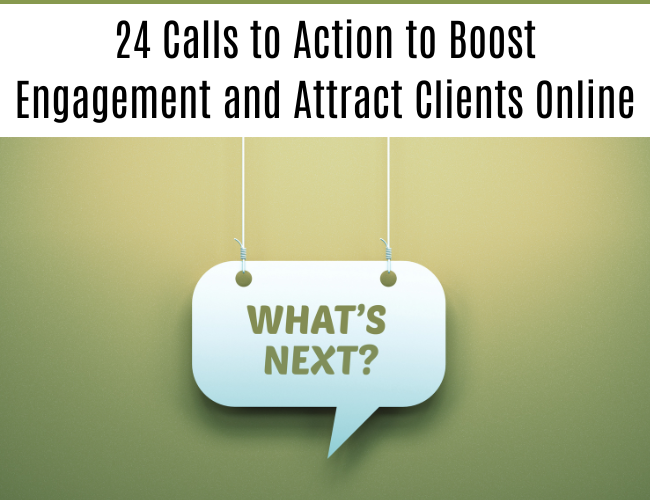Ready to grow your business online? An effective marketing plan will position your brand, help you grow your business, and increase sales. The problem is that too many coaches have great ideas, but they’re not sure where or how to start implementing them so take the ‘spray and pray’ approach.
It’s easy to start posting content without creating a plan and but then they wonder why they aren’t getting the results they want. If you’re one of them, stop what you’re doing and check this out.
KEY 1: KNOW YOUR AUDIENCE
The first step in creating a powerful plan is knowing who your target audience is. All too often when I ask someone who their ideal client is, they say everyone. When you try to market to everyone you market to no one. Let’s take two coaches as examples. One of them might serve 50+ women with hormonal issues. Another helps business owners streamline their systems and processes. As you can tell, the target audiences are completely different so the marketing strategy would be too. Answer these questions:
- Who are you trying to reach?
- What are their needs and wants?
- What are their biggest challenges?
- Where are they spending time?
Once you know who your ideal audience is, their needs, and challenges, and where they are spending time, you can create a strategy to attract and engage them online. This will help you to target marketing efforts towards the people who are most likely to be interested in what you have to offer.
KEY 2: DEFINE THE GOALS OF YOUR PLAN
The next step is to define the goals of your plan. Where do you see your business in 6 months? In a year? What kind of numbers do you need to hit in order for this plan to be successful? You can’t expect to create an organic marketing plan and start getting sales right away if you have a small following and a small list – so create goals that are realistic for the time you have available, your budget, and your business model. Knowing your current stats is the first step.
- How many Facebook, Instagram, and Pinterest followers do you currently have?
- How many new followers are you getting each month?
- How many email subscribers do you have?
- How many people are visiting your blog or website each month?
You can find out answers to these questions by looking at the analytics for your social profiles and mailing list provider. If you haven’t checked your website or blog stats then sign up for a free account with Google Analytics. This will give you access to valuable data so you know if your efforts are paying off.
KEY 3: RESEARCH YOUR COMPETITION
A powerful marketing plan requires you to know how your brand and your services are unique in comparison to your competitors in the eyes of your target customers. You can do this by asking a few questions.
- Do you have a strong brand that stands out from your competitors? What makes you different?
- What are the services you offer and who is your ideal client for each service? How do those differ from your competition?
- How does your client feel about working with you compared to other coaches in your niche?
Research is a must to create a marketing plan that will help set you apart from the crowd. If you don’t know who your competitors are then go to the social media platforms your target audience is spending time on a do a keyword search and start following them. Look at local (small) as well as national and international competitors. Larger businesses have spent time and money to create a marketing strategy and you can learn a lot by what they are doing. But make sure you are not mimicking their strategy, as competition should push you to work harder and be better! Top coaches most like have a blog and may have published a book too so make sure you look at those too. It is valuable content marketing, and it gives them visibility online.
KEY 4: CHOOSE THE RIGHT CHANNELS
If you want to grow your business online, then showing up online is non-negotiable. Now that you know where your target audience is and your current follower numbers you can start to strategize on the channels you need to focus on and where you will be driving them to.
- Choose 1 or 2 platforms to start where you will post consistently. This helps you to determine the amount of time you need to plan in your calendar.
- Which ones are going to give you the best return on investment?
In order of popularity here’s how the big three stack up:
- Facebook is by far the most popular but it’s also the most competitive.
- Instagram is the second most popular social platform.
- TikTok quickly gained momentum and it’s not just the teenagers and influencers getting an ROI with their efforts.
- If your target audience tends to be more business owners and executives, then consider LinkedIn.
- Pinterest is another platform that many overlook. I used to too until recently and the amount of traffic it’s driving to my website increased 60% in two months.
If you already have a presence on social media, use it to its fullest potential. Post relevant content consistently and work on building your online presence. If you want to get more traffic to your site from social platforms, create links from relevant content on your blog and social media accounts back to your website. To create a cross-platform strategy, combine social with a good email strategy so you have multiple ways to communicate with your followers. Betting your entire business on a social media platform could spell disaster if you ever lost access and it’s happened.
KEY 5: MEASURE AND TWEAK
A big complaint I hear often is that I get crickets when I post content. My response: how are you tracking your results? That’s when I tend to the get the ‘oh crap’ look. It’s important to track the results of your marketing efforts so you can measure, and tweak them as needed. This includes tracking:
- The number of new followers you’re getting each month and the level of engagement. Likes are just vanity metrics. You want to pay attention to comments and respond quickly since they may qualify as a lead.
- The number of leads and how many of those convert to clients.
- Views to your website, blog posts and emails too.
As mentioned before, check the dashboard of your social platforms and consider a marketing automation tool like ConvertKit or ActiveCampaign. Mailchimp These tools make it easy to see engagement and where your leads are coming from. Now that you have the five keys, it’s time for you to take action and strategize your marketing plan. Make sure you are also tracking the amount of time and money you’re spending on each marketing activity so you can see which ones are providing the best return on investment. To stay out of overwhelm, break your plan into smaller goals and consistently work towards achieving them.
Remember to tweak your plan as needed so you’re always generating more leads that can lead to building relationships and more client opportunities. If you’ve worked through all the keys and still have questions, then book a Clarity Call with me here.







